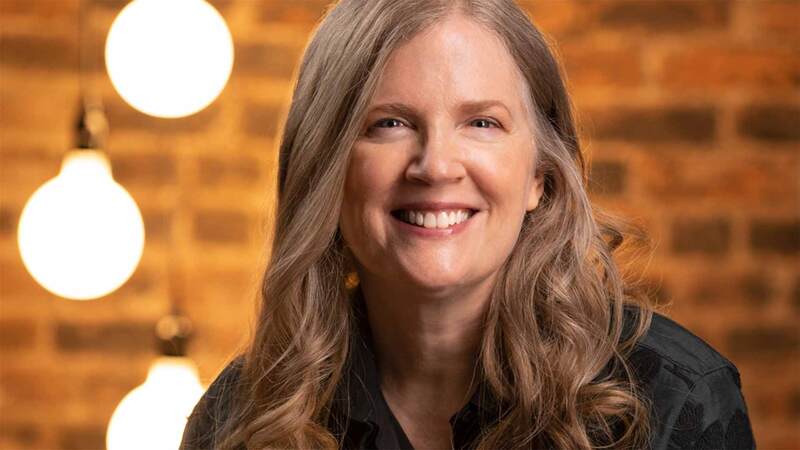You are viewing your 1 free article this month. Login to read more articles.
Evolving Travel market dips but category remains key for retailers
The international terror threat, a weaker pound and ill feeling towards the election of Donald Trump have contributed towards a shift in the travel market, but the book trade is still bullish about its long-term health, despite a drop in sales last year.
In 2017, revenue through Nielsen BookScan’s Travel genre was down 3.5% in volume, to 6,178,771 units, with a value drop of 2.3% (to £58.48m), across eight sub-categories including Maps, Travel Guides, Phrasebooks and Where to Eat and Drink. Taking the five-year view, the decline is even more stark: volume sales have plummeted 19% since 2012, with value sales down 8%.
Sales of the top 20 travel publishers in 2017 (see chart, right), further illustrates the decline, with 13 seeing year-on-year value drops, including four of the five largest travel lists: DK, Ordnance Survey, Rough Guides and AA. However, Lonely Planet—which with a 20.8% share of the market is the UK’s largest travel publisher—saw its sales rise 1.9%, and independents Wild Things, Cicerone and the Imperial War Museum achieved growth, as did Octopus and Bradt.
Despite the plunges, Waterstones, Daunt Books and W H Smith all said travel guide sales were still a “robust” part of their business, though some warned the market is shifting and that publishers were not responding quickly enough to the change.
The increased international terror threat, combined with the weak pound, is encouraging more domestic customers to holiday in the UK, acccording to Brett Wolstoncroft of Daunt Books. He said sales of guides to cities in the North of England—particularly Manchester, York and Leeds—were picking up. Bea Carvalho, non-fiction buyer at Waterstones, agreed that UK city guides were a current trend, with revenue from that strand of publishing up 15% through the chain in 2017, led by a guide to Sheffield.
However, Wolstoncroft believes publishers have been slow to act on the trend: “We are seeing a lot more people buying UK guides. Demand is growing all the time and it isn’t really being responded to yet by publishers. The UK is poorly served by guides.”
He added: “We are seeing a renewed interest in Europe, particularly France, Italy and Spain. I think that is because people are viewing some parts of the world, such as the Middle East, as less safe, so they want to rediscover Europe, which they view as safer. More people are asking for guides [to] Asia as well.”
The weaker pound has also made foreign destinations more expensive for UK travellers, said David Mantero, head of buying at Stanfords. Sales of guides to the US have also fallen through the travel retailer, he said, following recent political turmoil in the country. “We noticed a clear drop in sales of US titles in late 2016 and the beginning of 2017. This could be down to many things but, obviously, racial tension, far-right demonstrations, travel bans and other political issues can’t have helped,” Mantero said. “On the other hand, hurricanes in the Caribbean, floods in Southeast Asia, earthquakes in Mexico and, more recently, a severe drought in South Africa have also left a mark.”
The rise in popularity of peer-review websites such as TripAdvisor and Booking.com have taken a large swipe out of Where to Eat and Drink books, said Wolstoncroft, while the ease of internet access on smartphones has eaten into map sales.
Instead, sales of “secondary” guides— such as Emons Verlag’s 111 Places in (place name) That You Shouldn’t Miss series, Secret London guides and titles advising on the best walking routes or coffee shops in a city or country—are taking over. Carvalho said pocket guides were also selling well, with their £10 price point seeming to be the “sweet spot” for travel customers.
Stanfords’ Mantero agreed. “There seems to be a move towards pocket guides and to guides that cover smaller areas in more focus,” he said. “There is also a shift to guides with more of a unique selling point, such as guides to a specific kind of activity, like running, swimming in the wild, walking or even beer drinking, wine tasting, driving etc.”
As a result, Lonely Planet is planning to grow its number of “travel inspiration” titles—such as The Ultimate Travellist, Where To Go When, Epic Bike Rides of the World— according to managing director Piers Pickard. Currently its fastest-growing area, the guides are also popular with predominantly non-book retailers such as Urban Outfitters and supermarkets. “We’re seeing lots of growth in the more classic trade non- fiction area,” Pickard said. “It’s a really good business as it’s a little bit more proofed against recessions, economic changes and the changing popularity of destinations.”
Travel books for children are also growing, said Andrew Duncan, owner and director of Duncan Petersen Publishing, a travel publisher distributed by Octopus Books-owned Kyle Books. “Parents are looking for books to occupy children on journeys and are recognising the educational value of their children understanding the world around them,” he said. However, he believes publishers have to innovate further. “We have to bring new ideas to stimulate the market,” he said. “Everything is looking really stale at the moment.”
Wolstoncroft also said publishers must release new editions of guides faster in the internet age, with customers sensitive to information they perceive as out of date. “Our speeded-up world has completely killed any willingness for customers to buy a publication older than 18 months, and some publishers have been slow to respond, updating their books only every two to three years,” he said. “That is too slow in an age where people are getting up-to-date information very quickly [online].”
Despite the challenges, retailers are confident that the market will continue to be a pivotal part of their sales. W H Smith High Street Travel buyer Stephen McEntee said travel books were an “important part” of the chain’s offer, while Carvalho said that “although sales are down a little, travel still remains a very robust category for us.” She added: “Innovation is important in a shrinking market, but it is also important to stick to what is working. There is the danger of innovating too far.”
Travel lists look to digital
Travel publishers are rethinking the role of the guidebook after more widespread access to Wi-Fi and cuts to mobile phone roaming charges have made it easier to use apps and access digital travel content, such as TripAdvisor, while potential book-buyers are abroad.
Piers Pickard, m.d. of Lonely Planet, said the firm considers itself “a travel media company” rather than a publisher, with its print publishing business responding with only “very careful selections”, including comparative reviews and contextual information, “as that’s something the internet isn’t good at. To [access] that much information online is actually pretty slow and painful”, he said.
DK publisher Georgina Dee agreed. She said: “It is clear from the figures that consumers are looking for smaller guides. Being able to fit the internet in your pocket on your smartphone means curation in a book is more and more crucial.”
However, publishers are upping their digital offers to respond to, and compete with, the likes of TripAdvisor. Rene Frey, c.e.o. at APA Publications, which recently bought Rough Guides from DK, said it was intent on the business becoming more digitally-led in the next three to four years. Despite APA’s Insight Guides brand achieving growth for the first time in 11 years in 2017, Frey said insight guides was less focused on monetising content rather than being keen on deriving commission from selling customised trips online and connecting readers with local tour operators. The publisher offers a free e-book with a print edition, and also sells app editions of its guides. “This is where our digital strategy is different from any other publisher,” said Frey. “We have to find a way to shift consumers from print books and convince them to connect with us in a digital way as well. That’s where the app and the free e-book comes in. In return we’re getting data: we have information [on] where they are, and when and where they want to travel, and we can market our products to those people based on the data we have.”
Asked whether APA would take the same strategy with Rough Guides, Frey said it was something it would “definitely consider”. It is currently using the Rough Guides website, which gets two million unique users a month, to drive traffic to insight guides, an initiative that has seen a 400% increase in users asking for price quotes for trips.
“In the future, we may think about a similar model [for Rough Guides] in the way we are monetising with transactions rather than with content,” said Frey.
Meanwhile Ian MacDonald, m.d. at Marco Polo, said the publisher was currently using its new Discovery Tours app as an exercise in driving brand awareness and engagement.
















